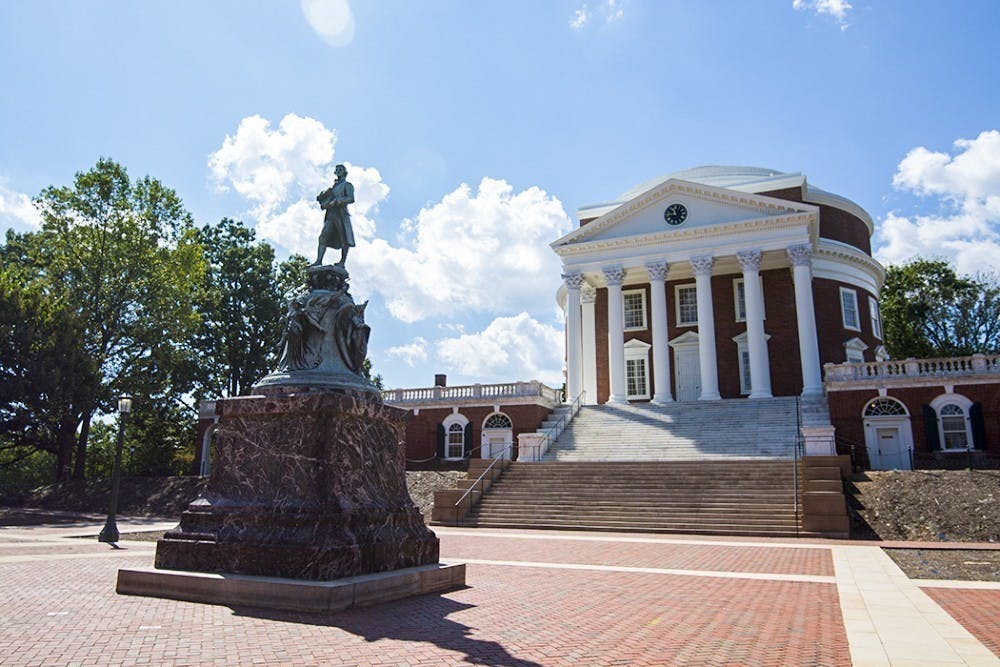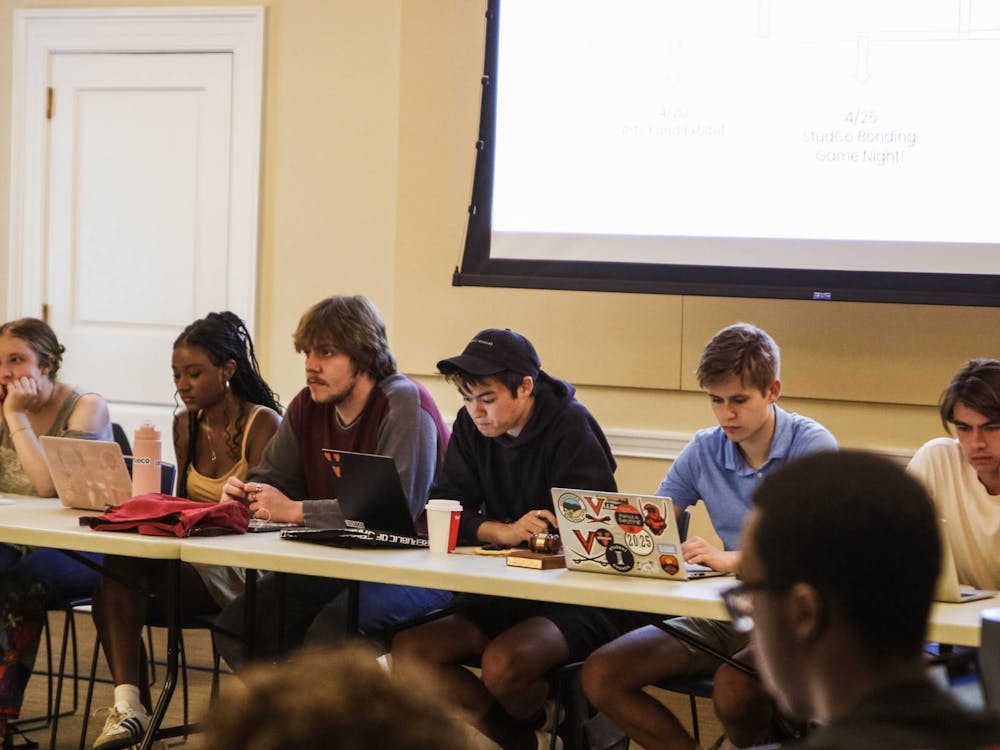中文版请点击此处
The Board of Visitors voted to freeze tuition for most undergraduate students and support recommendations made by the Committee on Naming and Memorials at a meeting of the full board Tuesday.
According to the resolution, there will be no changes to tuition and fees for the upcoming 2021-2022 school year for most undergraduates. Both in-state and out-of-state students who entered the College of Arts & Sciences in 2019 will still see a $2,700 increase for the 2021-2022 school year due to a 2018 decision by the Board, however.
“If there were ever a year to raise undergraduate tuition, it would be this year given the large and unexpected costs and the loss of revenues because of COVID,” University President Jim Ryan said. “At the same time, if they were ever a year not to raise undergraduate tuition, it is also this year given the pandemic and the financial hardship facing a lot of our students and their families.”
Students have been advocating for a tuition freeze for months, including members of Student Council and Young Democratic Socialists of American at U.Va., who started campaigns for the freeze in November. According to a survey administered by Student Council this fall, 42 percent of students reported that they or their families struggled to pay tuition for the 2020-2021 academic year.
The University last implemented a tuition freeze for in-state undergraduate students during the 2019-2020 academic year after receiving a $5.52 million increase in state funding that offset the originally planned tuition increase of 2.9 percent.
Ryan noted that it is not a “workable strategy” for the University to freeze tuition again, adding that there may be a “larger than usual” increase in tuition next year. The University last increased tuition for undergraduate students by 3.6 percent for the 2020-2021 academic year.
“[Holding tuition flat] is just not sustainable if we're going to remain competitive among our peers and maintain excellence,” Ryan said.
To guide its decision making, Ryan said the University plans to conduct a pricing and aid study this year to provide an “objective basis of facts and benchmarking” for tuition discussions.
Despite the undergraduate freeze, tuition increases — ranging between 0.1 percent and 13.2 percent — for most graduate programs were approved by the Board. Only two graduate programs in the McIntire School of Commerce will see slight decreases.
The Board also voted to increase housing rates slightly — between a 1.95 percent increase for first-year undergraduates to a 4.82 percent increase for upperclass students living in single rooms at Hereford Residential College. Dining rates will also increase between 1.52 percent and 3.4 percent, depending on a student’s meal plan.
The mandatory non-educational and general fee will also increase by $114 — $75 of which will go towards Student Health as a part of a four-year plan to increase services and expand facilities.
In a separate resolution, the Board also voted to support recommendations made by the Committee on Naming and Memorials, a group established by the University in February. The committee was tasked with creating protocols for naming — and in some cases, renaming — buildings on Grounds as well as making recommendations on contextualizing memorials.
The Naming and Memorials Committee concluded that a digital contextualization of the University's statues and memorials would help visitors and residents appreciate the history of the University. The committee recommended the University create a “digital historical stratigraphy” that will permit students, visitors and community members to develop an “informed perspective” on its various statues and memorials.
“I couldn't be happier about this recommendation or this outcome, which I think will enhance the experience of those who visit our Grounds for the very first time or who have walked these grounds thousands of times,” Ryan said.
The recommendation notes that both the number of statues and memorials on Grounds and their physical locations would not make widespread contextualization using markers a “practicable option” due to the complexity of the histories that would need to be represented and the limited space physical markers would allow.
“The basic idea behind it is providing more education about the historic landscape, [which] is consistent with the University's pedagogical mission,” Ryan said. “Doing this digitally enables us to provide more detail, more accessibility, more flexibility.”
The committee specified that any digital contextualization created by the University should detail the history of the statue or memorial’s commission, funding and construction as well as an “informed treatment” of its artist. To create the digital contextualization, the committee has recommended that Ryan establish a working group of professional historians, students, local residents and alumni to develop the digital contextualization.
The proposed resolution pertains to the statue of Thomas Jefferson in front of the Rotunda as well as other statues and memorials located around Grounds. A proposed method of digitally contextualizing these pieces included placing a QR code near the statue or memorial that would allow visitors to access the history using their phones. The Board of Visitors first voted to contextualize the Jefferson statue last fall.
“This will allow us to create what in effect will be another walking tour of statues and memorials like the Washington and Jefferson statues on the Lawn, the Aviator statue outside of Clemons Library, the Homer statue and the new Memorial to Enslaved Laborers,” Ryan said.
Board member Maurice Jones asked Ryan whether the proposed resolution would prevent the University from removing statues and memorials on Grounds — including the Jefferson statue, but also existing Confederate statues, such as the Frank Hume Memorial Fountain and a statue dedicated to fallen Confederate soldiers located in the University cemetery.
“To be pointed about it, I would not support removing the Jefferson statute,” Ryan said.
Ryan said that the Board of Visitors will reconvene in June to consider a resolution addressing the Hume Memorial. The Board previously voted to remove or rededicate the memorial in the fall, and student groups have since campaigned for its removal.





